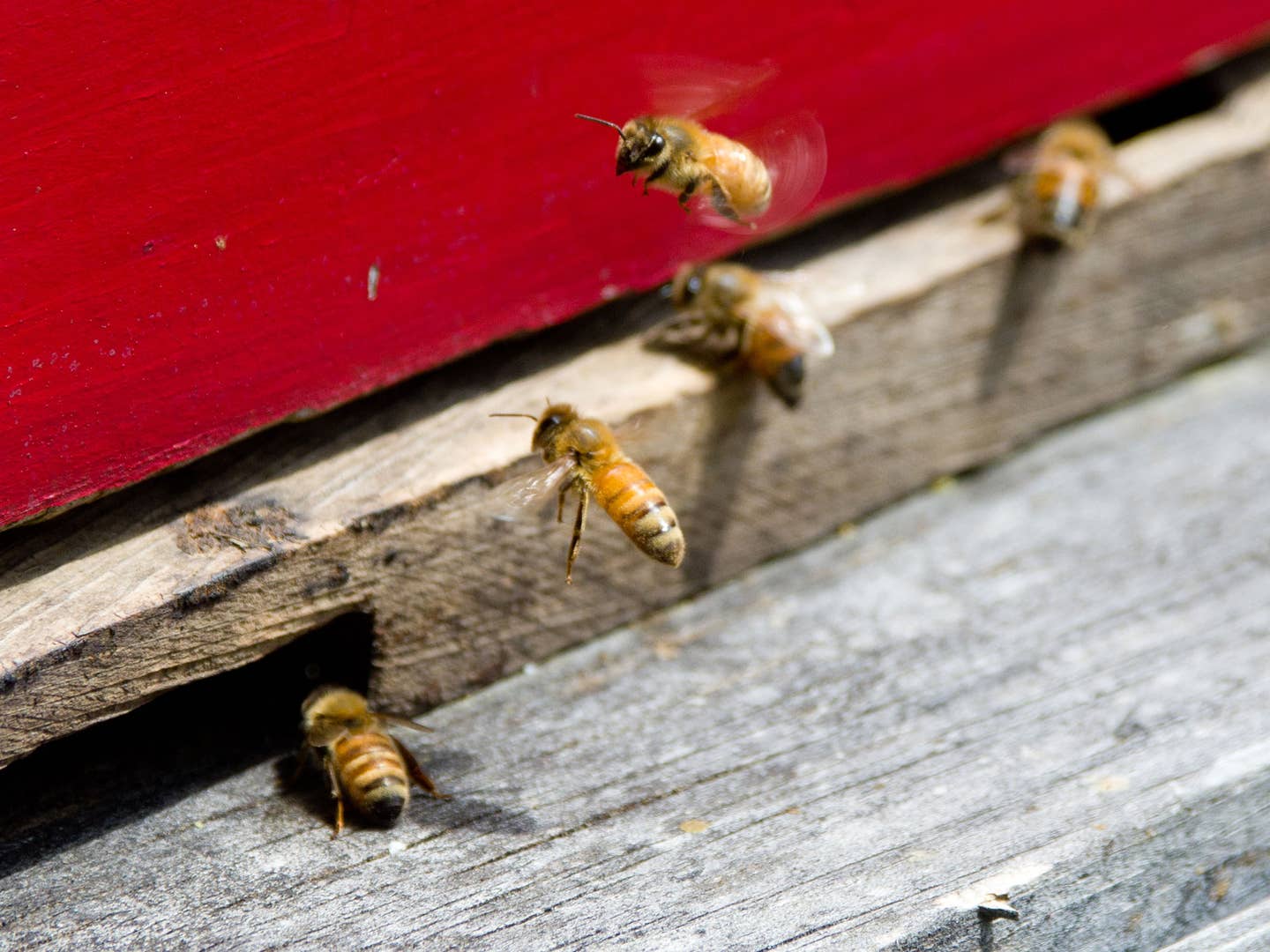
How Scientists Are Racing to Save Our Bees
The honey bee, which is responsible for pollinating $15 billion of American crops, is in trouble. But a crew of crafty scientists and activists is here to help—not just our bees, but our entire food system
In 2007, beekeepers across the United States noticed something strange happening in their hives: Their bees were disappearing. They left behind no carcasses or signs of disease; the honey bees had simply fled, abandoning their colonies in an eerie arthropod echo of Roanoke.
The new phenomenon was called Colony Collapse Disorder, or CCD, and it sparked panic across the U.S.: What would our world (not to mention our dinner tables) look like without honey bees? Beyond producing honey, Apis mellifera, our domesticated honey bees, are responsible for pollinating $15 billion worth of American crops each year, everything from kiwis to cashews to kidney beans. Our food system as we know it cannot exist without them.
Ordinarily, five to ten percent of managed hives will die from cold each winter, a natural occurrence known among apiculturists as 'winter die-off,' but in the last three decades that average has risen to as much as 40%. Since 2014, beekeepers have also started reporting substantial summer die-offs, reaching as high as 28% in 2015. In January, the endemic rusty-patched bumble bee, a common pollinator for tomatoes and blueberries among other crops, became the first bee in the continental United States to be listed as endangered (seven Hawaiian bee species had been listed the year before).
While common honey bees aren’t at any immediate risk of extinction, diseases, parasites, and human environmental assaults have all made apiculture an increasingly precarious (and pricey) proposition. Pesticides are infecting pollen and nectar, weakening bee immune systems. Synthetic fertilizers are taking the place of traditional cover crops like alfalfa and clover, both rich sources of clean forage. Monocultures of wheat, soy, and corn have replaced sweeping meadows of wild flowers. And as ever, climate change’s long shadow looms, disrupting flowers’ blooming cycles.
As public interest in Colony Collapse Disorder grows, researchers and activists are springing into action, developing grassroots and state-of-the-art methods to save our bees—and even prepare for a possible future without them.
Fighting Parasites With Mushroom Goo
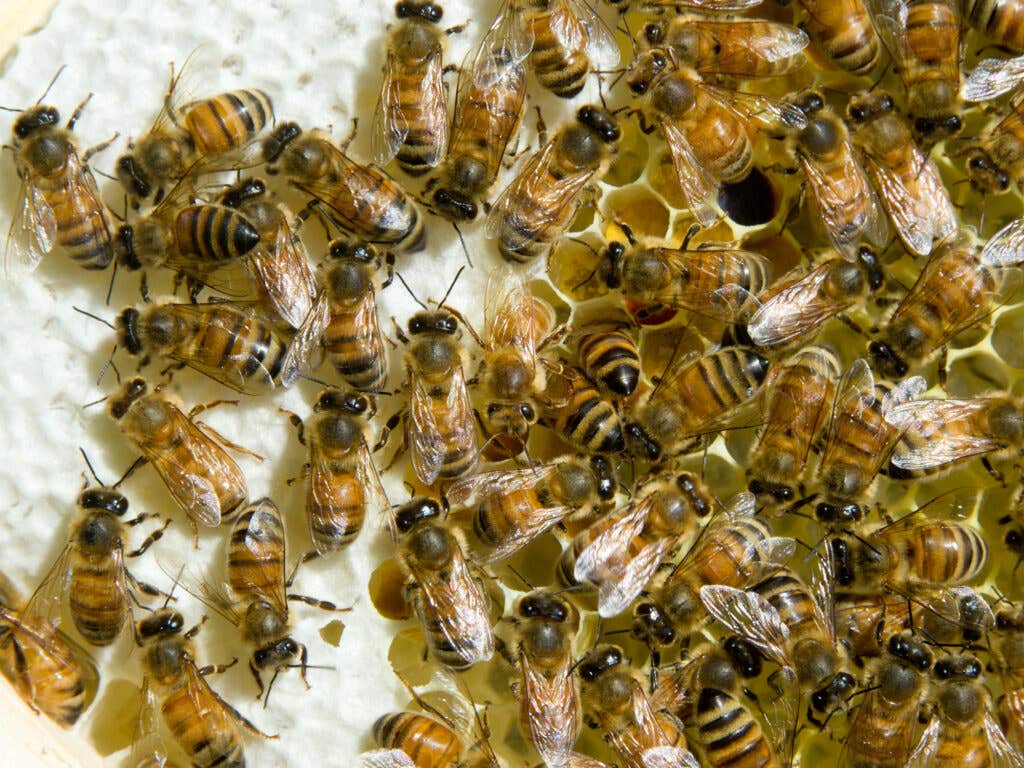
The honey bee's single biggest enemy in the U.S. and Europe is a parasitic mite aptly named Varroa destructor, first introduced to the United States 30 years ago, when it most likely hitched a ride from its native habitat in Southeast Asia on the back of an infected queen.
Amina Harris, director of the Honey and Pollination Center at UC Davis, describes the varroa mite this way: "Imagine your body with eight dinner-plate-size mites on it, each one weighing about six pounds, sucking your blood." Varroa mites don't kill honey bees directly, but they drain them of their energy while spreading a whole host of diseases and viral infections.
Because their life cycles are short, varroa mites adapt quickly to chemical treatments such as pesticides, which means scientists have had to get creative. Marla Spivak at the University of Minnesota, one of the foremost experts on bee health, has been breeding super-punctilious queen bees that keep their hives mite-free. At Purdue University in Indiana, Greg Hunt breeds aggressive ‘ankle-biting’ worker bees that snip the legs off the mites, bleeding them dry before they establish themselves in the hive.
One of the strangest solutions—and also, potentially, the most commercially viable—has come out of a collaboration between Dr. Steve Sheppard, an entomologist at Washington State University, and mycologist Paul Stamets.
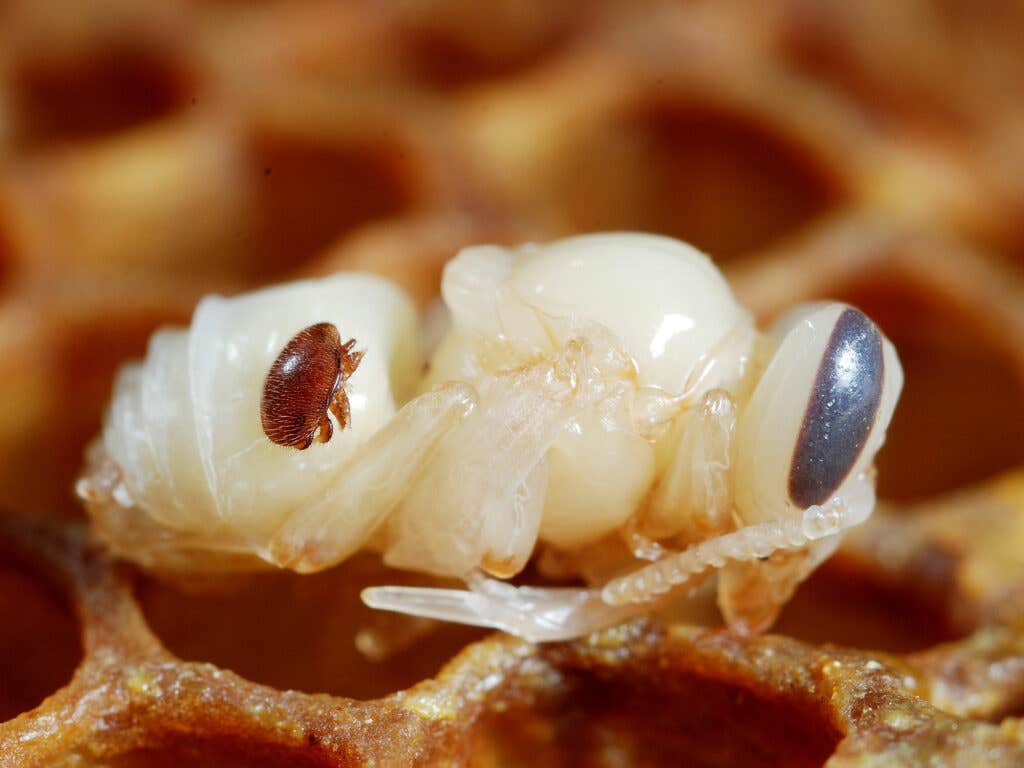
Working with fungal extracts that have already proved effective in treating human ailments like pox, flu, and herpes, Sheppard and Stamets developed a mushroom-based feed that they believe will make honey bees more resistant to the diseases spread by varroa mites.
To test the product, they fed bees mushroom extracts in various concentrations and measured the insects’ viral levels and overall longevity against a control group fed sugar water. The results of the final study, conducted on 532 colonies in southern California last year, are currently being analyzed by the USDA, but the results from previous rounds of tests proved even more successful than Sheppard and Stamets had imagined, reducing viral load substantially and increasing the bees’ lifespans. “If the mite is harming the bee through amplification of viruses,” Sheppard says, “then maybe this will help the bee tolerate the mite better.”
Sheppard and Stamets have also been researching spores from the metarhyzium family of fungi, often used to battle infestations of carpenter ants and termites. The spores are harmless to bees but fatal for varroa mites: essentially a non-chemical pesticide. Once the USDA analysis is completed, Sheppard and Stamets plan to start producing both fungal derivatives through Stamets' company, Fungi Perfecti, and distribute them on a commercial scale by winter 2018.
Fungus-based treatments might help to combat varroa mites, but that’s just one of many problems facing one of many species of pollinators. “People are always looking for a silver bullet,” Sheppard says, “but it’s no one thing. We’ve just reached a tipping point.”
Protecting Pollinator Diversity
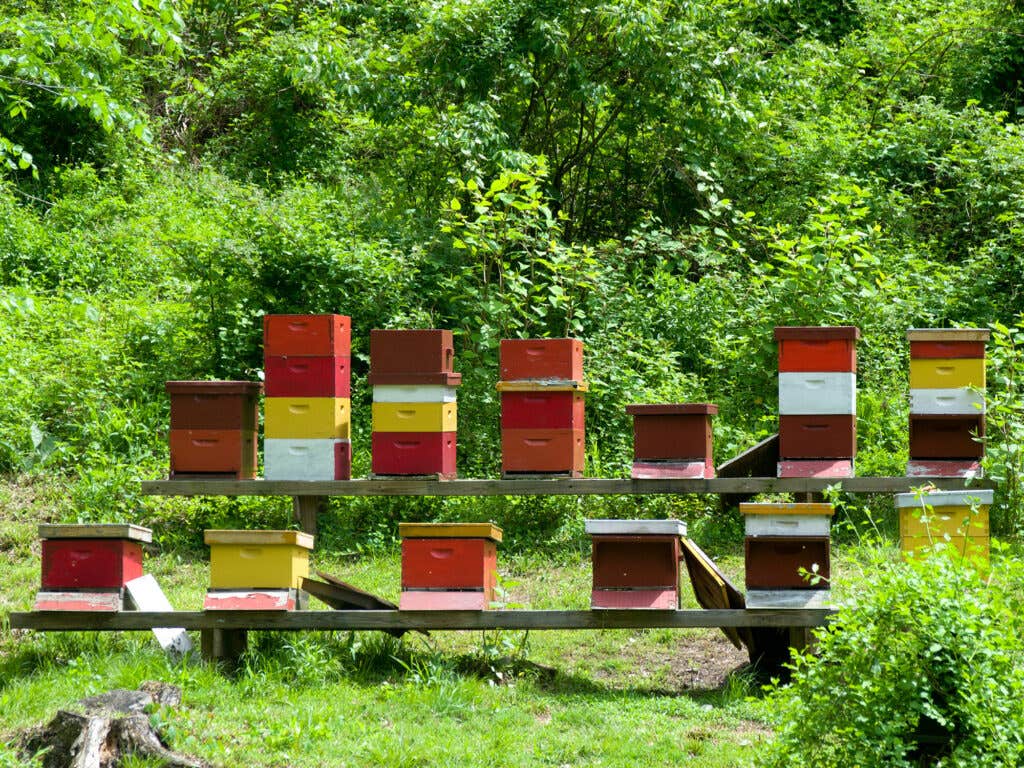
Part of that tipping point comes from an over-reliance on just a few species of insects to pollinate so many of our plants. There are thousands of species of pollinators (bees and otherwise) beyond the honey bee, which over millennia have developed complex relationships with the plants they support.
Down the coast at UC Davis, entomologist Neal Williams has focused his research on holistic solutions aimed at improving pollinator diversity, creating what he calls “working agricultural systems” by breaking up vast swaths of agricultural land with pollinator-friendly hedgerows. The groves provide bees sources of food throughout the year, offer safe nesting grounds for solitary, ground-dwelling bee species (the majority of pollinating bees), and create a refuge from industrial pesticides.
Williams and his team planted their first pollinator habitats six years ago among row crops like watermelon and squash. As expected, more species of pollinators populated the land, and with them, the watermelons prospered: more melons per square foot, and in some cases, better fruit. The success shows why a diverse, healthy population of pollinators is so important not just for the bugs, but for us. “You may not need 4,000 species,” Williams says, “but you do need more than four.”
As professionally managed hives continue to see declining numbers, Williams recommends focusing on native regional pollinating species to help manage biodiversity. "It's unlikely that we're going to lose the honey bee as a pollinator, but it's also becoming increasingly difficult to keep those populations going. We are seeing shortfalls in some areas, so the question is can other pollinators pick up the slack? Well, in some places they already are," Williams says. "We should always be striving toward a diversified pollinator system."
And if All Else Fails: The Robo-Bee
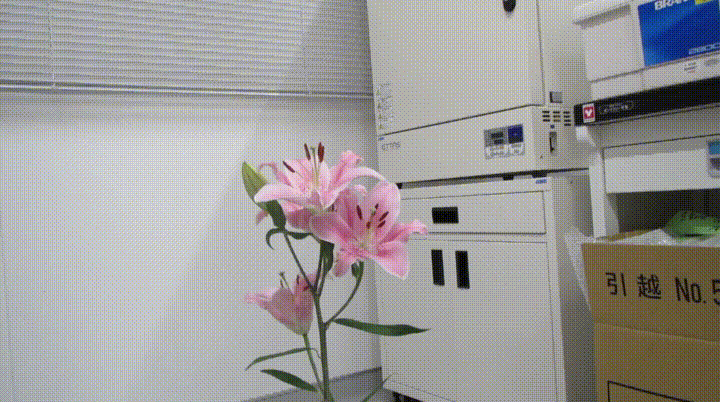
The fact that honey bees, globally, are very much alive, if not quite well, has not stopped some of the world’s more vibrant imaginations from projecting a not-too-distant future entirely without bees.
There’s ongoing research into tomatoes that can reproduce without pollination (though this would eliminate the genetic diversity that makes our crops healthy and flavorful). In parts of China, where gratuitous pesticide use has produced beeless landscapes, huge teams of workers pollinate apple orchards with tiny paintbrushes (a tedious but ancient technique pictured in Assyrian reliefs from 800 BC). Most recently, Netflix’s Black Mirror provided us with a handy vision of computerized bee drones buzzing through London, a last hedge against mankind’s inevitable extinction. And as it turns out, that last one won’t be science fiction for long.
In February of this year, Japanese chemist Eijiro Miyako debuted the world’s first pollinating drone. A decade ago, while developing conductive ionic liquids in his lab, Dr. Miyako inadvertently produced a series of dense, viscous gels. “These gels didn’t show superior performance, so I put them away in drawers and cabinets and forgot about them until I moved out of my lab two years ago,” Miyako says.
When he rediscovered the gels, they were unchanged—still dense, still sticky, incidentally perfect for replicating the hairy filaments on pollinator bodies that collect pollen. “The adhesiveness and non-volatility of the ionic liquid gels was exciting. I guess it’s what you call serendipity.”
In the intervening years, Miyako had seen TV spots and read news stories about the global honey bee crisis, and when he pondered his stable ionic goo, it struck him as an ideal vector for transporting pollen. The first stage of the experiment involved fixing the gel to ants and caging them with tulips to see if the gel could carry pollen effectively. From there, he moved on to a small, commercially available drone called a quadcopter, affixed horse hair to its plastic casing to imitate the furry bodies of honey bees, coated the hairs in gel, and proceeded to fly it into the stamens of an open lily. The process isn't as elegant as pollination in the wild, but it works: The drone delivers pollen from one plant to another.
Miyako predicts a commercial pollinator drone available on the market in the next ten years. “I believe some combination of AI, GPS, and high-resolution cameras could be useful for automatic machines in the future,” he says. “A swarm of robotic bees are going to self-think the shortest path and highest efficiency for pollination.”
Preserving the Miracle We Have

Laurie Adams, the Executive Director of Pollinator Partnership, a San Francisco-based non-profit focused on raising awareness about pollinator health, thinks there's an easier (and cheaper) solution to the problem. "I would invest in the miraculous system we have in place," she says, "rather than searching for a mechanical solution."
Adams and the Pollinator Partnership started working on these issues 20 years ago, a decade before CCD brought the plight of pollinators into the public eye. As the Pollinator Partnership worked to bring together industrial agriculture, academia, the federal government, and private citizens, Adams says, “we realized pollinators were a great messenger for conservation. People care about vanilla and chocolate and coffee, which all require pollination.”
While Sheppard, Williams, Miyako, and countless other scientists across the world develop tools and technologies to protect pollinators, the Pollinator Partnership has spent two decades building bridges between the scientific and public spheres. Since creating the North American Pollinator Protection Campaign in 1997, the Pollinator Partnership has successfully lobbied for the institution of a Pollinator Week recognized in 48 states (this year it's June 15-21), created a database on honeybee health, and developed 31 free eco-regional planting guides, available for download from their website.
“We don’t just translate between the scientific world and the general public,” Adams says. “We give you the actions you can take. People can sympathize, but their actions won’t necessarily change.”
In other words, fatalism is easy. But by disseminating information and conservation strategies widely and publicly, Adams hopes to send the message that supporting pollination can be easy, too.
"The first action is not to be afraid when you see a bee, but to be concerned when you don't see a bee," she says. Buying pesticide-free foods and honey produced in the U.S., where regulations on dilution are strict, is an important step. Perhaps most essential is creating healthy pollinator habitats in our own homes. In the city, that can mean planting window boxes that support native bees and the colonies kept by your eccentric upstairs neighbor. In the suburbs, that means replacing sterile grassy lawns with plants that support local pollinators—not just native bee species, but also beetles, butterflies, and bats. "Honey bees are, for us, just one of many species," Adams says. "We're worried about a whole host of animals."
Given the dangers facing other pollinators, I asked, why has the public conversation focused so disproportionately on honey bees? “Honey bees operate as a unit, a unit we’ve manipulated since Egyptian times,” Adams replied. “Beehives as social systems have a lot of cultural implications for us. We see symbolism in a natural process.”
Which goes some way to explaining the galvanizing power of Colony Collapse Disorder, which predicts our deepest 21st-century nightmare: that the whole human experiment could disappear in an instant. We’ve managed bees since our earliest flirtations with civilization, and seen in their own societies a reflection of our own. There’s an elegant symmetry to the idea that by destroying them we might also destroy ourselves.
“We look to [honey bees] as surrogates,” Adams says, though of course they work together more effectively than humans ever have. “If we acted a bit more like them,” she added, “we might be better off.”
Keep Reading
Continue to Next Story










